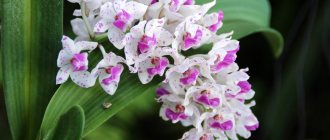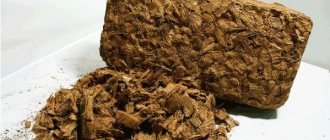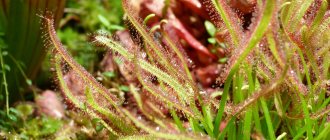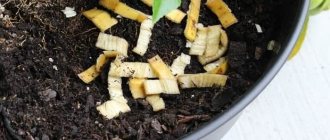The color variety of orchids is impressive, but are there blue orchids? Blue phalaenopsis are very common on the shelves of shopping centers. The unusual coloring attracts attention and fascinates. To an ignorant person, such plants seem like a real miracle of nature. In fact, this is a clever marketing ploy by the manufacturer.
Special dyes give them their unusual color. In the absence of proper care, such plants are most often doomed to slow death from poisoning. So, how to preserve blue phalaenopsis?
A little history or how did blue phalaenopsis appear?
Blue orchids were first introduced in 2011. Their originator is a company from Florida. Just 3 months later, the Royal Blue Phalaenopsis was presented at a Dutch flower competition and immediately won an award. Even then, the jury predicted enormous popularity among consumers.
From the very beginning, manufacturers did not hide the fact that the blue color is the result of a special dyeing and that during subsequent flowering the flowers will be white. The technology for coloring phalaenopsis is patented and is a trade secret. According to the manufacturers, its essence is to place plants in a special environment with conditions very close to natural. If this technology is strictly followed, no harm is caused to the plants.
Features of care
Caring for blue phalaenopsis has some features. For example, immediately after purchase, a plant needs proper adaptation. If this is neglected, the orchid may die. To reduce the negative impact of dyes, it is recommended to treat the plant with anti-stress drugs such as Epina. And also, you should not immediately replant phalaenopsis into another soil. Replanting is an additional stress that can significantly worsen the condition of the plant. Otherwise, caring for blue phalaenopsis is standard.
Lighting
For normal development, phalaenopsis requires bright, diffused lighting; direct sunlight is harmful to it. The best place to place orchids of this type are east and west windows. In winter, it is advisable to provide additional light to the plants. The optimal length of daylight for them is at least 14 hours. To organize additional lighting, you can use ordinary fluorescent lamps or special phyto lamps.
Humidity and watering
For full development, phalaenopsis does not require high air humidity; in most cases, it adapts perfectly to the conditions around it. For irrigation, you must use pre-settled water at room temperature.
Watering is most conveniently done using the immersion method. This method avoids unnecessary flooding. At very low air humidity, the plant can be additionally sprayed with warm water, but care must be taken to ensure that water does not accumulate in the area of the growing point and does not fall on the flowers.
Temperature
The optimal temperature for growing phalaenopsis is 20–25 °C. In winter, especially when there is insufficient lighting, it is advisable to reduce it to 16–18°. But it is also desirable for the plant to provide a small difference between day and night temperatures. This promotes the formation and development of flower buds.
Journalist Arkady Mamontov himself wrote about this on February 11 in the microblog:
—————————————
Arkady Mamontov
There is such an employee of the MK newspaper - Alexander Minkin, a classmate and friend of the former oligarch Gusinsky. In the mid-1990s – early 2000s, he tried to burn people’s hearts with a verb. In his materials, the authorities are always bad, and those who express a point of view different from his are doubly bad.
Minkin is a man with a broken destiny. He took the child from his ex-wife. (History is silent about how he raised him there. Although many psychiatrists who studied Minkin had questions for him. But since the figure of the MK employee was heavily promoted, the matter was not progressed. But it would be necessary to check this gentleman regarding his relationship with children). “Dead Elite” - Minkin’s material about me is published here. He claims that in the 2000s Mamontov did not report on the fight against pedophiles, but was engaged in propaganda for perverts. What can I say? Where did this MK employee suddenly come from with his article? Apparently, they stepped on the liberals' toes... For young people who are interested in the social life of Russia, who were still small children in those years, I will explain what and how it really happened.
In the 90s, all kinds of Western infections poured into Russia, including pederasty and pedophilia. Then, in those years, among the so-called. It was fashionable for the liberal elite (to which Minkin belongs) to engage in all kinds of perversions with children. The country was seen as a center for sex tourism.
At this time, a group of detectives led by Eduard Lopatik was formed in the Moscow criminal investigation department in the homicide department to suppress the activities of an international mafia group of perverts called the Blue Orchid. The group was international. Perverts filmed porn videos here and sent them to America to pedophiles there.
The Blue Orchid criminal group acted with impunity and brazenness. Why? I answer: in the 90s, the filter that worked under Soviet rule and cut off perverts, psychos, spies, and agents of influence from power structures, ceased to function. Including thanks to people like Minkin, who in his articles and speeches blamed the KGB, the CPSU and all government bodies of the former Union for everything. This employee of the MK newspaper did a lot to destroy the state system. And now she's shedding crocodile tears. Hypocrisy!
But let's go back to the 90s. In the summer of 1998, liberals pushed through a law in the Duma to lower the age of consent for sexual contact with children - from 16 to 14 years. It was the liberals, Minkin’s friends, who drew up the lines of this law in such a way that high-ranking pedophiles, who by that time worked in the Presidential Administration, the editorial offices of metropolitan newspapers and other very influential institutions, could satisfy their base passions with impunity. By 2001, the situation with pedophilia in Russia had become catastrophic. The article for sodomy was repealed. No one was punished for pederasty. The punishment for corrupting children was also very mild. The pervert could generally be acquitted - under certain circumstances. There was even a norm that there was no need to punish a pedophile if there was no violence in his contact with the child! Considering all this, I took up this topic. Moscow detectives, led by Lopatik, provided material.
While hunting for pedophiles, we came across the names of those who passed and pushed the law to lower the age of consent. The time has not yet come to name the person who was behind this. By the way, MK employee Minkin knows him and is very close to him. Why doesn’t he write about this, why is he silent? Why did he call me 12 years ago before the release of the program and said with a poorly hidden threat in his voice that these materials should not be shown? Why is he publishing his articles about me now? Apparently, the perverts gave him instructions to intimidate Mamontov. They won't succeed. After the first “Children” program took place, State Duma deputy Svetlana Petrovna Goryacheva contacted me and, together with caring people, we continued to fight this vile infection. They released several parts of shocking films that were shown late at night.
In the end, through joint efforts it was possible to repeal the law lowering the age of consent. Now he is 16 years old, as was the case under Soviet rule. In addition, penalties for pedophiles have been tightened. But the blue mafia desperately resisted all this and is resisting. He looks for all sorts of loopholes and, through his accomplices, tries to denigrate those people who are fighting perverts who threaten the security of our country.
The appearance of such articles once again indicates that we are on the right path. And we will continue to defend our people and our country. Minkin is just a tool of liberal persecution, I understand this perfectly well, and my answer is addressed not to this newspaper employee, but to those people who want to know what really happened and is happening. Eduard Lopatik, who was involved in the investigation and fight against pedophiles, died in a car accident several years ago. He was an excellent person, a family man, a strong professional and a true citizen of his country, who fought for its people until the end of his days. Eternal memory to him. The Moscow police, now the police, continue to investigate and identify pedophiles. As for my program, if there is material and it needs to be published in order to push the authorities to further tighten penalties for perverts, then we will definitely do it.
Source
Transfer
The orchid must be replanted as the bark grows or breaks down in the substrate. This usually happens no more than once every 2–3 years. Transplantation is best done in the spring, at this moment the plant’s vitality is at its peak and the plant tolerates all procedures painlessly.
For planting it is necessary to use transparent flowerpots and specialized soil. Planting orchids in ordinary light-proof pots is unacceptable. Photosynthesis processes take place in its roots. During transplantation, the root system is thoroughly cleaned of the remnants of the old substrate, and all rotten and dead areas are removed. To process the resulting sections, use cinnamon powder or charcoal.
During the first 2 days after transplantation, the plant is not watered, then watering is gradually resumed. To speed up rooting, you can add a couple of drops of Zircon to the irrigation water. It effectively relieves stress and accelerates growth processes.
What to do if blue phalaenopsis begins to die?
If immediately after purchase the plant begins to drop buds, and the lower leaves begin to wrinkle and turn yellow, it is necessary to urgently take rescue measures. For this:
- Carefully cut off the flower stalk. It contains the highest concentration of toxic substances.
- Remove the plant from the pot and rinse the roots thoroughly under running water.
- Remove all rotten and blue areas on the roots.
- Plant the orchid in fresh substrate. You cannot leave the plant in old soil with dyes.
Description and photos of popular varieties
Blue Vanda (Vanda coerulea)
India is considered the birthplace of this natural beauty, but it can also be found in Asia, Indonesia and even Australia.
Leathery leaves arranged in two rows and up to twenty flowers with blue petals in a mesh make it fabulously beautiful. It looks especially impressive if placed in glass vases or used as an hanging plant. Hanging aerial roots also contribute to the overall picture of the composition. It is not for nothing that she is the most famous orchid of the Vanda genus; it was she who became the progenitor of many types of hybrids with exotic colors .
Its juice is used in medicine for eye drops. And in India they believe that it heals not only the body, but also the soul.
Blue Vanda (Vanda coerulescens)
The homeland of this miniature species is China, Burma, Thailand. The leaves collected in a rosette at the end of winter and spring are decorated with an inflorescence consisting of a large number of long-lived fragrant blue flowers up to 4 cm in diameter.
Sky Blue Sun Orchid
It is found only in Tasmania. A divinely beautiful orchid with a little sun inside is on the verge of extinction .
Its blue petals open only in warm weather, which is why it is often called the sun orchid.
Cattleya Labiata coerulea
In nature, Cattleya Labiata is found in Venezuela and Brazil, where it grows on trees and moss-covered rocks at an altitude of 900 m above sea level.
It is especially beautiful when 3 to 5 unusual large flowers bloom on its peduncle with a bluish tint (it can be light or rich) and a lip that looks like a paper bag in appearance, is darker at the tip, and has golden veins inside.
It is often called the lost orchid due to its fascinating discovery story. The first cattleya discovered by W. Swenson was lost and only 71 years later it was found again by the collector Moreau from Paris. John Lindley used the term labiata to draw attention to the large lip of cattleyas.
Cattleya Sea Breeze Blue
An aerial hybrid of two cattleyas: Cattleya warneri and Cattleya walkeriana . This small plant, 20-30 cm in height, blooms in spring and early summer with large (12 cm) airy flowers; their blue petals are very thin in structure and glisten in the sun.
Dendrobium (Dendrobium leucocyanum)
Miniature view from the highland forests of New Guinea. It loves the cold and blooms its very delicate pale blue clusters of flowers at the end of winter. The flowers are very small, 0.4 cm long, and do not open very wide.
Is it possible to paint a plant a heavenly color at home?
If you decide to change the color of an orchid blue at home, do not forget that the result will be temporary, and the flower will experience severe stress.
For coloring, use only mature healthy plants, preferably white , since it is easier for them to calculate the final result.
- The least dangerous thing for an orchid is surface coloring of flowers with a special floral aerosol.
- It is possible to color the plant by watering it with dye. It should be taken into account that in addition to flowers, roots, leaves and stems will also change color. When switching to watering with regular water, the plant will gradually return to its natural color.
- The third method of staining is to inject the dye with a syringe into the lower bud on the peduncle. It is not recommended to inject dye into the roots. After an injection into the peduncle, the plant may hurt, but survives, but an injection into the stem or root will most likely destroy the flower. You can only use special color paints or food coloring.
The shade of blue is controlled by the amount of dye.
And yet, if you want to have a piece of heaven on your window, it is better not to rush to buy painted phalaenopsis or, especially, to torment your favorite flower yourself, but remember about the delicate hybrids of Vanda, Cattleya and Dendrobium.











